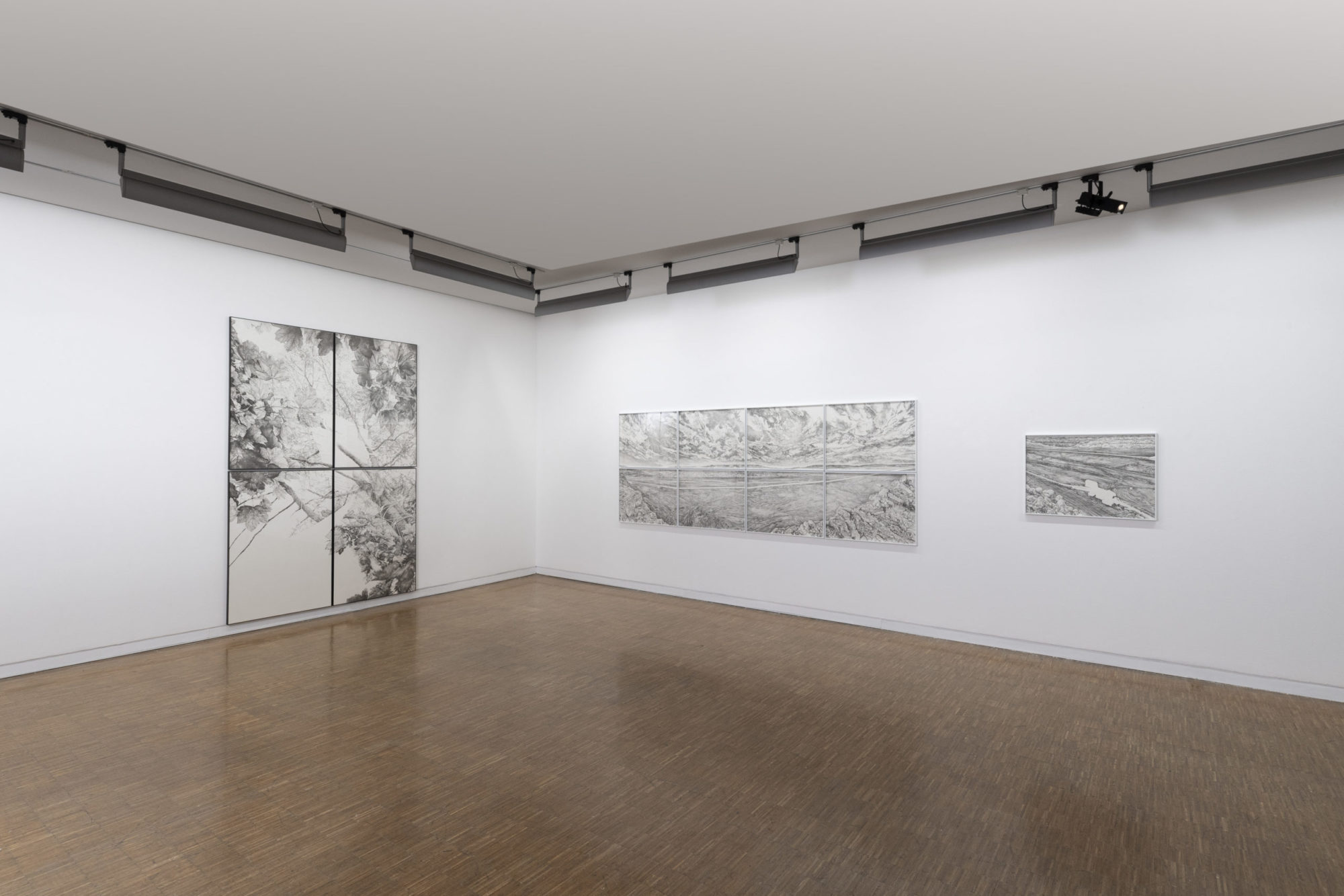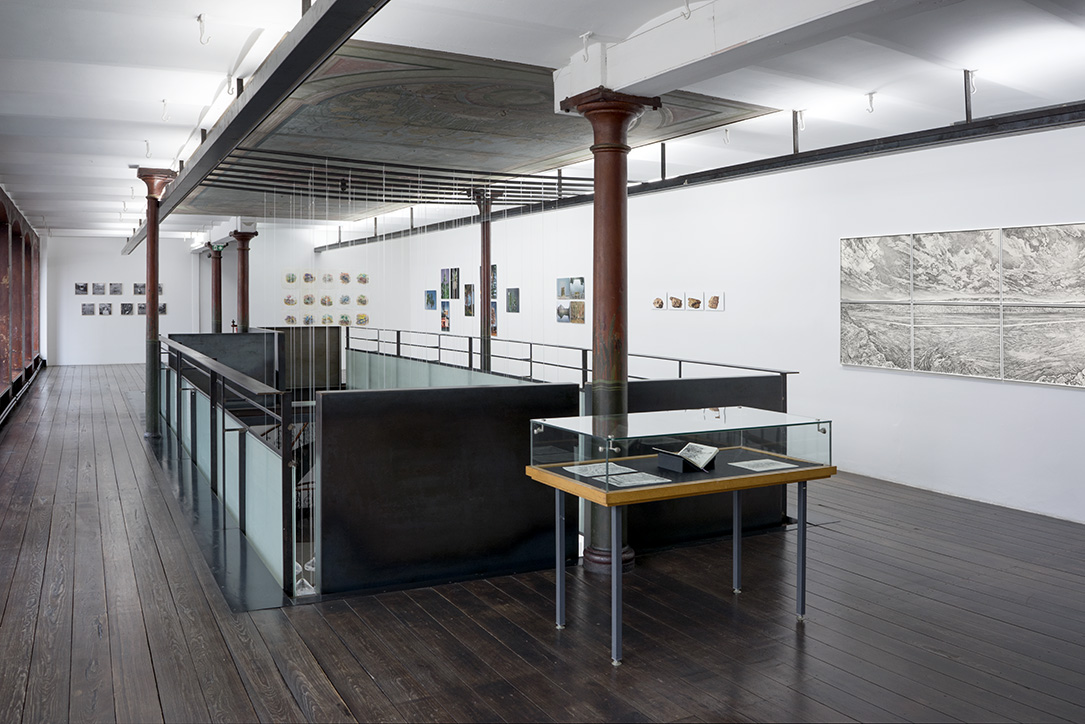Emmanuel Henninger has been drawing full-time for the past two years, and his work fits naturally into the exhibition Herbes folles, which Viktoria von der Bruggen has organized at the CEAAC. This young artist, who is presenting several impressive pieces in the exhibition, confides in us.
“I live in Mulhouse, and during a trip to Germany, I was able to sharpen my sensitivity to the environment and to primary forests in particular. I am interested in expressing the impact of man on his environment, and how it reflects the state of a society. What are the deep transformations of an era: this is what stimulates me.
This first exhibition at the CEAAC, is part of the Regionale. At the same time, I will present other pieces at T66, in Freiburg, Germany, and this exhibition will be extended until June 2021.
The Hambach open-pit mine in Germany is the largest in Europe. I took it as my subject for ten months. It is a landscape marked by humans. The eight-panel landscape, presented at the CEAAC, shows, through spaces in reserve, what man has transformed. Several levels of reading are juxtaposed: the frame forms a line, the horizon drawn another, the road for trucks, a third again.
I worked in a classical way, with Indian ink, in homage to ancient engravings. I wish to remain in a tradition of black and white.
Forests, spaces rich in contradictions
The duality of forests, which are full of life and other spaces of non-life, deserves to be presented. I wish to draw the marked and damaged landscapes. To explore the social and political aspects, the loss of biodiversity. Today the inhabitants lack landmarks, a narrative, and this narrative must be geographically localized.
I have focused part of my research on the activists of the Zones to defend (ZAD). These zones constitute small worlds free of ruling forces, of hierarchy. What are the relations of domination that are exercised against these places? I want to question and capture the atmosphere of these places.
A cartography of ecocidal landscapes
My objective could be translated into both a cartography and a geography of ecocidal landscapes. Why these territories are transformed. This underlies social translations such as the relocation of villages, which contributes to the destruction of ties and creates social violence.
Lignite mines are among the main sources of greenhouse gas emissions. The dispersion of fine particles is a public health problem. In Hambach there are 1300 inhabitants, but no more companies. The mine forces us to make only one choice, which scars the landscape and destroys its future.
Lignite, a destructive coal
Lignite is a form of coal, primary and sedimented, a bad quality of coal. Thus coal, synonymous with progress, is also destruction while the object also refers to the artistic symbolism, with cave paintings. Later, in the 19th century, coal was a symbol of economic growth and allowed the production of electricity. Its change of status reflects the headlong rush caused by progress, which destroys the beauty of nature. Germany, however, has stopped using nuclear power and is currently in the process of decarbonization.
I also had the opportunity to visit Notre-Dame-des-Landes and Bure. My objective is to work on local stories, in a context of mobilization and meaning, to give hope. I do not wish to be in naturalism, nor in documentary. I do not take sides. How to produce an imaginary on the basis of a local experience?
Following the observation of the Hambach mine, I will investigate the primary forest of the same place, 12000 years old. Zadists live there. I will try to give an account of what exists, of the richness of the biodiversity.”
Hélène CASCARO, February 2021
More infos about Hélène Cascaro

